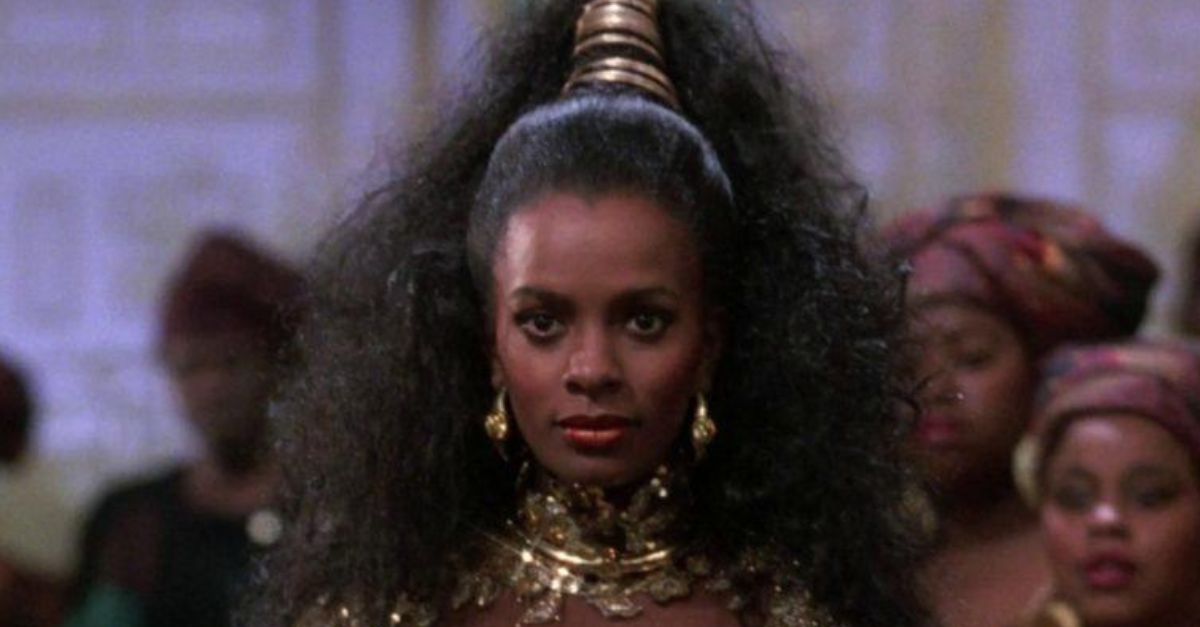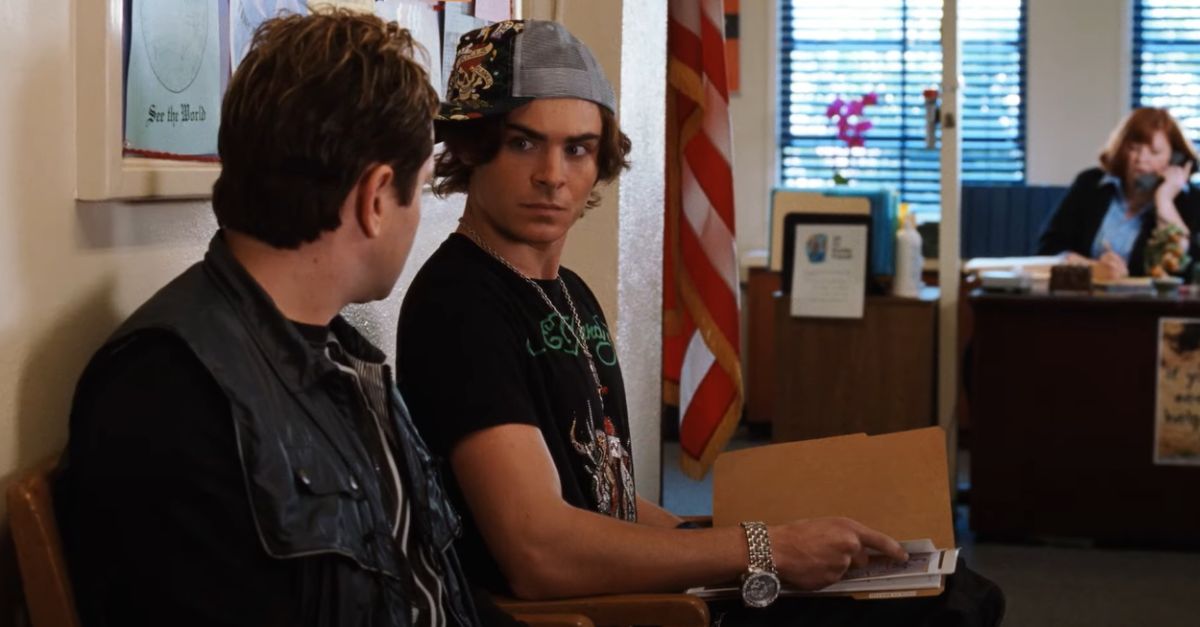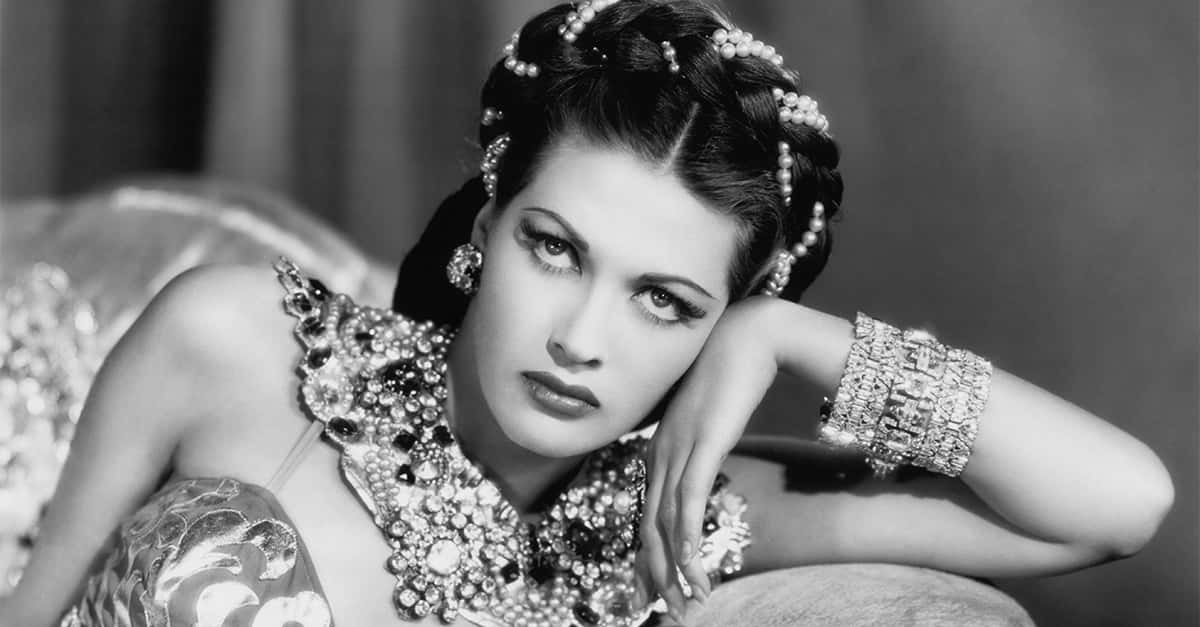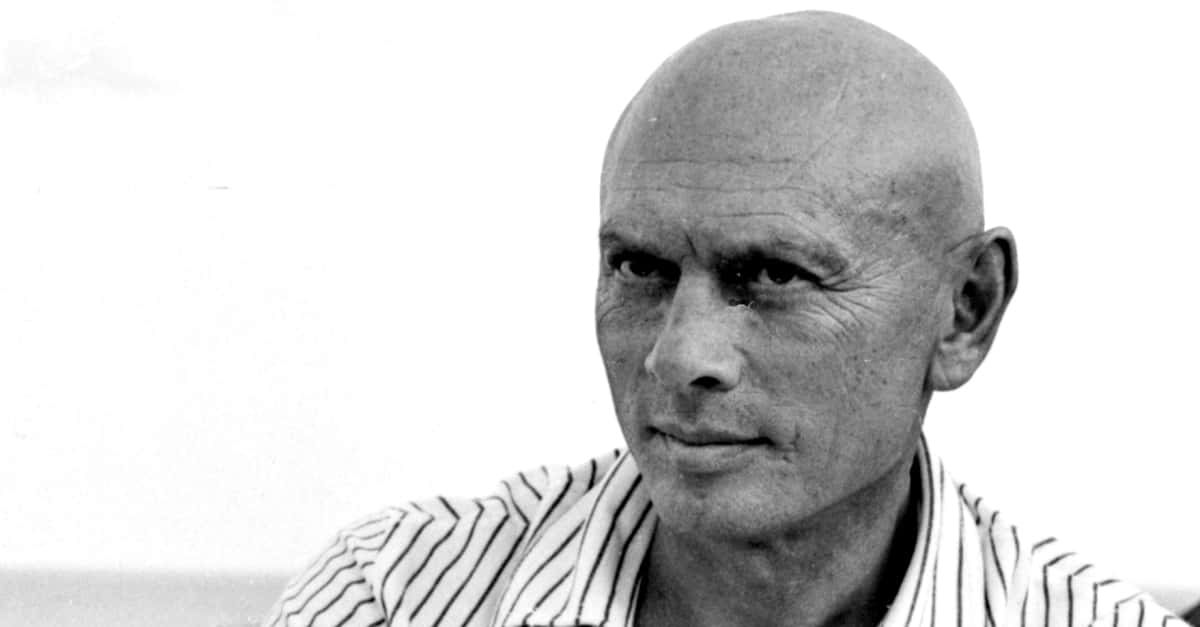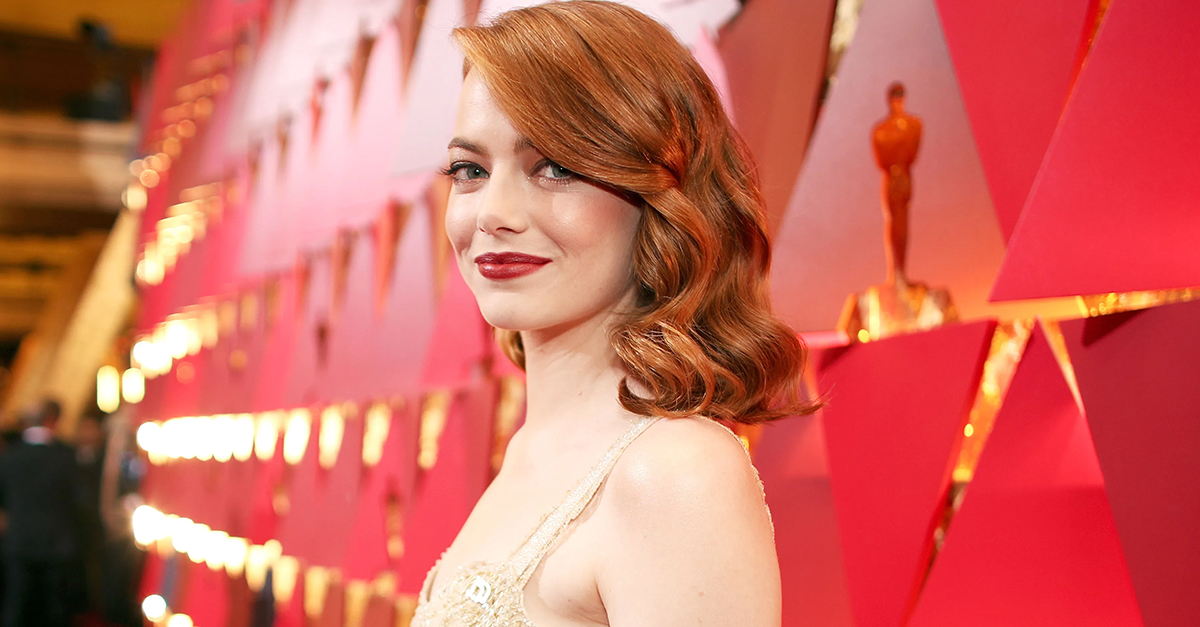Black Stardom That Faded
These Black actresses changed the tone of Hollywood without ever being given the stage they deserved. They broke barriers, but history rarely mentions their names—until now.

Madame Sul-Te-Wan
One of the earliest Black actresses in film, Sul-Te-Wan appeared in D W Griffith’s The Birth of a Nation (1915)—though uncredited. She often played stereotypical roles but was a trailblazer in securing screen time during an era that excluded Black performers almost entirely. Her resilience kept her working for decades.
 Unknown photographerUnknown photographer, Wikimedia Commons
Unknown photographerUnknown photographer, Wikimedia Commons
Frances E Williams
A political activist, Williams had minor roles in mid-20th-century Hollywood films like Three Secrets and TV shows like Frank's Place. Despite her sophistication and talent, she was rarely cast in meaningful roles. Offscreen, she became a key advocate for civil rights in the arts.
 The Jerk (2/10) Movie CLIP - The Lord Loves a Workin' Man (1979) HD by Movieclips
The Jerk (2/10) Movie CLIP - The Lord Loves a Workin' Man (1979) HD by Movieclips
Butterfly McQueen
Best remembered as Prissy in Gone with the Wind (1939), Butterfly McQueen brought a unique voice and nervous comedic energy to her roles. While her performance became iconic, it also typecast her in subservient roles. Frustrated by limited opportunities, she eventually left acting and pursued academic and philosophical interests.
 Trailer screenshot, Wikimedia Commons
Trailer screenshot, Wikimedia Commons
Nina Mae McKinney
Dubbed “The Black Garbo,” Nina Mae McKinney was the first African American star to sign a long-term contract with a major studio. Her dazzling performance in Hallelujah (1929) electrified audiences, but Hollywood’s racial boundaries stifled her career. She later found more opportunities in Europe, where her talent was better appreciated.
 Unknown authorUnknown author, Wikimedia Commons
Unknown authorUnknown author, Wikimedia Commons
Ethel Moses
Ethel Moses was a Harlem beauty queen who became a striking presence in Oscar Micheaux’s pioneering films of the 1930s. Known for Temptation and Underworld, Moses balanced glamour with dramatic depth. Despite critical praise in Black cinema circles, she was shut out of mainstream Hollywood, with her talent confined to race films.
Vanessa Bell Calloway
Audiences remember her radiant, comedic turn in Coming to America (1988), but few recall the range she showed in drama and stage. Despite consistent work in film and TV, Calloway rarely landed leading roles. Her fate reflects a pattern where charisma and experience were often overlooked by casting directors.
 Angela George at https://www.flickr.com/photos/sharongraphics/, Wikimedia Commons
Angela George at https://www.flickr.com/photos/sharongraphics/, Wikimedia Commons
Nia Long
With memorable turns in Boyz ‘n the Hood and The Best Man, Nia Long helped define 1990s African American cinema. While her work remains beloved, major studios never gave her the opportunity to the A-list status. She’s endured in the industry, but largely without the recognition that her consistency deserves.
 LuisAHHH!at https://www.flickr.com/photos/angelaluisa/, Wikimedia Commons
LuisAHHH!at https://www.flickr.com/photos/angelaluisa/, Wikimedia Commons
Ruby Dandridge
Mother of Dorothy Dandridge, Ruby appeared in radio and film in the 1930s–1950s. She voiced and acted in productions like Cabin in the Sky and played recurring roles in early television. Despite her longevity in the business, she was confined to background roles, largely uncredited for her body of work.
 Film screenshot (Republic Pictures), Wikimedia Commons
Film screenshot (Republic Pictures), Wikimedia Commons
Estelle Hemsley
Often cast in matronly roles, Hemsley delivered powerful performances in films like Take a Giant Step, where she played a complex grandmother struggling with racial identity. A Broadway veteran as well, her film appearances were limited but resonant—another case of Hollywood underusing veteran Black stage talent.
 Federal Theatre Project, Wikimedia Commons
Federal Theatre Project, Wikimedia Commons
Claudia McNeil
Best known for originating the role of Lena Younger in A Raisin in the Sun on stage and in the 1961 film, McNeil’s performance was widely praised. Still, substantial film roles never followed. Her voice and presence made her unforgettable, but Hollywood failed to sustain her momentum.
 Valente or studio, Wikimedia Commons
Valente or studio, Wikimedia Commons
Lillian Randolph
With a warm voice, Lillian Randolph appeared in over 100 films, radio shows, and television programs, including It’s a Wonderful Life (1946) and The Great Gildersleeve. Often cast as a maid, she nonetheless imbued her characters with wit and depth. Yet Hollywood never offered her roles equal to her skill.
Cleo Desmond
A lesser-known actress of the 1930s and 1940s, Desmond appeared in several race films, including works produced by all-Black casts. While not a household name, she was part of a foundational generation of African American women who helped create an independent cinema countering the erasure by mainstream Hollywood.
 Unknown photographer, Wikimedia Commons
Unknown photographer, Wikimedia Commons
Paula Kelly
A gifted dancer and Emmy-nominated actress, Paula Kelly seamlessly moved between Broadway, television, and film. She brought depth to everything from Sweet Charity to Night Court. Nevertheless, mainstream recognition never quite caught up to her talent, leaving a legacy rich in quality but short on accolades.
 unknown (The Coconut Grove Playhouse, Miami), Wikimedia Commons
unknown (The Coconut Grove Playhouse, Miami), Wikimedia Commons
Lynn Whitfield
Commanding and intense, Whitfield earned acclaim for her portrayal of Josephine Baker in HBO’s 1991 biopic. Though she’s worked steadily, she’s often relegated to mother figures or supporting roles, which is far beneath her capabilities. This illustrates how Black women are rarely allowed sustained runs as leading, multifaceted characters in Hollywood.
 John Mathew Smith & www.celebrity-photos.com, Wikimedia Commons
John Mathew Smith & www.celebrity-photos.com, Wikimedia Commons
Jasmine Guy
As Whitley Gilbert in A Different World, Jasmine Guy became a cultural icon. Her comedic timing and dance background set her apart. But after the series ended, meaty roles disappeared. Despite her training and impact, Guy was largely left out of the TV and film renaissance that followed.
Juanita Hall
Tony winner Juanita Hall dazzled audiences in South Pacific, both on Broadway and in film. She started out directing choirs and singing in jazz clubs before conquering the stage as a Juilliard-trained artist. Although she was the first Black actor to win a Tony, Hollywood never embraced her fully.
 Carl Van Vechten, Wikimedia Commons
Carl Van Vechten, Wikimedia Commons
Hilda Simms
Despite her commanding presence in the stage and film versions of Anna Lucasta, Simms never broke into Hollywood the way her performances warranted. As a trained actress and radio talent, she brought intellectual weight to her roles. Nevertheless, she was sidelined in favor of more palatable faces for white audiences.
 Time Inc.; photograph by George Karger, Wikimedia Commons
Time Inc.; photograph by George Karger, Wikimedia Commons
Meagan Good
Though she’s a familiar face in Black cinema, Meagan Good has often been boxed into narrow roles—from teen seductress to girlfriend archetypes. Her ability to hold the screen has never been in doubt, but she’s rarely given characters that grow or lead. Her filmography shows a missed opportunity for more.
Juanita Moore
Recognition from the Academy came in 1959, but sustained opportunities never followed. Juanita Moore’s heartbreaking role in Imitation of Life should have launched a flourishing career. Instead, she was relegated to television guest spots, with her immense emotional range largely untapped in an industry reluctant to reimagine Black maternal roles.
 Unknown authorUnknown author, Wikimedia Commons
Unknown authorUnknown author, Wikimedia Commons
Roxie Roker
As Helen Willis on The Jeffersons, Roxie Roker made television history as part of one of the first interracial couples shown in primetime. Trained at Howard University and the American Academy of Dramatic Arts, she had stage chops beyond sitcom fame. Yet beyond that breakthrough role, Hollywood offered little else.
 CBS Television, Wikimedia Commons
CBS Television, Wikimedia Commons
Karyn Parsons
Known to millions for her role on The Fresh Prince of Bel-Air, Karyn Parsons captured a generation’s attention. But once the show wrapped, significant roles eluded her. Rather than chase limited parts, she focused on writing and history education, quietly exiting an industry that gave her little room to grow.
 Miguel Discart, Wikimedia Commons
Miguel Discart, Wikimedia Commons
Dorothy Dandridge
History remembers her Oscar nod for Carmen Jones, but few know how steep her career’s decline was after that. Dandridge was Hollywood’s first African American head turner—praised yet punished for her charm. Racism and personal turmoil left her tragically underused and misrepresented in her prime.
 Stevan Kragujević, Wikimedia Commons
Stevan Kragujević, Wikimedia Commons
Fredi Washington
Fredi Washington stunned in Imitation of Life (1934), portraying a mixed-race woman struggling with identity. Her light skin limited the roles available to her as Hollywood wasn’t ready to feature Black women in complex leading roles. She later became a civil rights activist by challenging the very industry that refused to fully embrace her.
 trailer screenshot (Universal Pictures), Wikimedia Commons
trailer screenshot (Universal Pictures), Wikimedia Commons
Lena Horne
Censorship and racial boundaries limited Lena Horne’s film career. Though beloved as a singer and performer, her movie scenes were often isolated for easy removal in The Jim Crow South. Despite her trailblazing contract with MGM, she remained more decorative than central in the studio’s vision for Black stars.
 Studio publicity still, Wikimedia Commons
Studio publicity still, Wikimedia Commons
Pam Grier
The face of 1970s Blaxploitation cinema, Grier wielded guns and charisma like no actress before her. Yet when the genre faded, so did leading offers. Her roles as an independent woman of action didn’t evolve into the mainstream acclaim or diverse scripts that her talent clearly merited.
 Canadian Film Centre from Toronto, Canada, Wikimedia Commons
Canadian Film Centre from Toronto, Canada, Wikimedia Commons
Tamara Dobson
Towering at 6’2” with so much elegance, Dobson was poised to become Hollywood’s next action icon. As Cleopatra Jones, she fought crime and racism with style, but that momentum stalled. The industry couldn’t envision her outside that role, and she vanished from screens despite having star power to rival male contemporaries.
 Tamara Dobson in the movie Chained Heat (1983) by Tray Davenport
Tamara Dobson in the movie Chained Heat (1983) by Tray Davenport
Vonetta McGee
Audiences admired her in genre hits like The Great Silence and Blacula, but McGee’s ambitions extended beyond the typical screen roles. She sought meaningful, complex characters and often spoke out about the lack of them for African American women. Hollywood’s discomfort with her assertiveness likely played a role in her fading visibility.
 VONETTA McGee - unsung beauty of the Italian Black Film era! by Karine Alourde Biographies
VONETTA McGee - unsung beauty of the Italian Black Film era! by Karine Alourde Biographies
Diana Sands
Fiercely talented, Diana Sands originated the role of Beneatha Younger featured in A Raisin in the Sun on Broadway and reprised it in the 1961 film. She challenged Hollywood’s limited roles for Black women and won praise in drama and comedy. Her early death at 39 cut short a promising future.
 film trailer screenshot (Columbia Pictures), Wikimedia Commons
film trailer screenshot (Columbia Pictures), Wikimedia Commons
Theresa Harris
Theresa Harris had the looks and skill of a leading lady, yet she was repeatedly cast as a maid or background figure. In films like Baby Face and Professional Sweetheart, she often stole scenes from bigger stars. Her legacy highlights how systemic bias undercut promising careers from the start.
 trailer screenshot (RKO), Wikimedia Commons
trailer screenshot (RKO), Wikimedia Commons
Rosalind Cash
With her intense screen presence and rich voice, Rosalind Cash brought intelligence and poise to roles in films like The Omega Man (1971). Though she held her own opposite Charlton Heston, her career never gained the traction it deserved. Hollywood’s narrowcasting rarely gave her characters the complexity she commanded.
 Rosalind Cash 1981 interview by aSharpShow
Rosalind Cash 1981 interview by aSharpShow
Carol Speed
Best known for leading the 1974 horror film Abby, Carol Speed was a standout in the Blaxploitation era. Her performances blended vulnerability with raw energy, yet her journey to success was cut short by limited roles and a changing market. Today, she remains a cult favorite, though largely unacknowledged by the mainstream.
 Carol Speed Has Died (1945-2022) | Played Abby The Black Exorcist by Reelblack One
Carol Speed Has Died (1945-2022) | Played Abby The Black Exorcist by Reelblack One
Gloria Hendry
One of the first Black women to appear romantically opposite James Bond, Hendry broke taboos in Live and Let Die (1973). Her bold performance should have opened doors but instead marked the peak of her mainstream film work. The industry’s discomfort with her boundary-pushing role sidelined her future potential.
 Nightscream, Wikimedia Commons
Nightscream, Wikimedia Commons
Louise Beavers
Louise Beavers is best remembered for her emotional performance in Imitation of Life, a rare moment of depth in a role typically rooted in servitude. Often playing maids, she worked steadily but faced a ceiling built on stereotypes. Her dignity and gravitas lent weight to characters Hollywood wrote off.
 RKO Pictures, Wikimedia Commons
RKO Pictures, Wikimedia Commons
Brenda Sykes
Audiences in the 1970s recognized Brenda Sykes for her grace and beauty, particularly in Mandingo and television guest roles. Despite her frequent visibility during the decade, she was often cast as a love interest or accessory. Sykes’ career slowly faded, revealing how charm alone couldn’t overcome racial limitations in casting.
Cicely Tyson
A master of restraint and emotion, Cicely Tyson defied Hollywood norms with roles rooted in dignity and purpose. Her work in Sounder (1972) earned her acclaim, but she still struggled to find scripts equal to her talent. Her selective presence was shaped by an industry-lacking imagination.
 Hans Peters for Anefo, Wikimedia Commons
Hans Peters for Anefo, Wikimedia Commons
Diahann Carroll
Winning a Golden Globe for Julia in 1969, Carroll broke ground as the first Black woman to star in a network sitcom in a non-servant role. Yet even with her skills and talent, she wasn’t offered the volume or variety of roles she should have received. Hollywood never fully caught up to her.
 CBS Television, Wikimedia Commons
CBS Television, Wikimedia Commons
Theresa Randle
After standout roles in Malcolm X and Spike Lee’s Girl 6, Theresa Randle seemed poised for lasting success. But by the early 2000s, she had nearly vanished from screens. Despite early promise and critical praise, she was met with silence from an industry unwilling to nurture her rise.
 eternalconceptspr, Wikimedia Commons
eternalconceptspr, Wikimedia Commons
Mary Alice
Best known for her soulful portrayal of the Oracle in The Matrix Revolutions, Mary Alice was a Tony and Emmy-winning powerhouse. Her brilliance resonated more on stage and television than in film, despite her versatility. While industry insiders praised her consistently, she never received the widespread fame her performances warranted.
Robin Givens
Fame came quickly to Robin Givens through Head of the Class and a high-profile marriage to Mike Tyson. Yet her personal life often overshadowed her acting. Though talented and camera-ready, she was rarely cast in substantive roles afterward. This shows how scandal and sexism shaped perceptions of Black actresses in Hollywood.
 Ambitions clip with Robin Givens by blackfilmandtv
Ambitions clip with Robin Givens by blackfilmandtv
Lola Falana
Lola Falana’s star power shone brightest on Las Vegas stages, where she reigned as the “First Lady of Vegas”. Though she acted in films and had her own variety show, the movie industry couldn’t quite figure out how to frame her versatility. Her success in live entertainment outpaced her film and television career.
 CBS Television, Wikimedia Commons
CBS Television, Wikimedia Commons
Amanda Randolph
Sister of Lillian Randolph, Amanda Randolph became the first Black performer with a regularly scheduled network TV show, starring in The Laytons (1948). A pioneer in radio, television, and stage, she was also a classically trained pianist. Despite her accomplishments, she’s rarely mentioned in Hollywood retrospectives or awards histories.
Evelyn Preer
A leading lady of silent-era Black cinema, Evelyn Preer worked extensively with Oscar Micheaux in films like Within Our Gates (1920). Known as "The First Lady of the Screen" among Black audiences, her performances broke ground during a time when Black actresses had virtually no space in mainstream film.
 From The New York Public Library, Wikimedia Commons
From The New York Public Library, Wikimedia Commons
Maidie Norman
Usually cast in servant roles, Norman rewrote her dialogue to eliminate racially biased tropes, insisting on dignity even in stereotyped parts. She played housekeepers and maids in films like What Ever Happened to Baby Jane? (1962), but was also a respected academic and theater veteran. Hollywood never gave her the spotlight she earned.
 Carl Van Vechten, Wikimedia Commons
Carl Van Vechten, Wikimedia Commons
Beah Richards
Oscar-nominated for Guess Who’s Coming to Dinner (1967), Richards was also a prolific playwright and civil rights activist. Her gravitas made her ideal for strong, intellectual roles, but the movie industry rarely offered her leading parts. Much of her best work occurred offscreen, where her voice demanded more than the roles she was given.
 NBC Television, Wikimedia Commons
NBC Television, Wikimedia Commons

